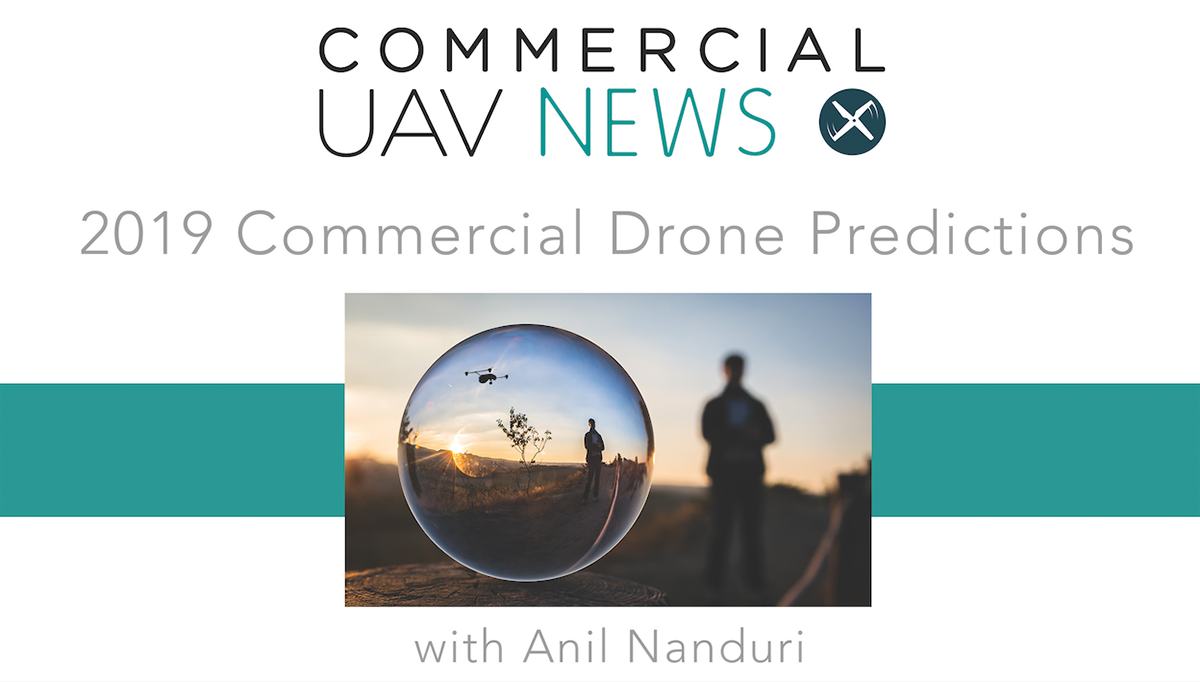Regardless of the role drones did or did not play in the temporary shut down of Gatwick airport, it’s clear that security and counter-drone solutions are going to be a major theme and topic of discussion for the drone industry in 2019. However, such things need to be considered in the context of how drones can help companies do everything from increase the visibility of their assets to modernize bridge inspections. Intel has taken the lead in terms of defining what these efficiencies can look like, and these benefits are set to evolve in a big way in 2019.

Anil Nanduri
To get a better understanding of what those changes could look like, we talked with Anil Nanduri, VP & GM for the Intel Drone Group. Anil has previously talked about how drones can
enable automation that accelerates deployment, but that’s just one of the topics that commercial drone operators need to consider in 2019.
Jeremiah Karpowicz: What kind of changes do you think 2019 will bring us when it comes to changes with commercial drone regulation from the FAA?Anil Nanduri: We are seeing increased collaboration within the industry and the FAA on complex flight missions that are not initially covered within Part 107. Ongoing testing and proving out of night missions, BVLOS, remote ID, UTM, command and control technologies, and obstacle avoidance technologies that are critical for carrying out automated missions in a safe way.
In 2019, we plan to see the FAA granting more waivers as part of the UAS IPP program that will enable commercial drone operators to operate UAVs more autonomously, and eventually, remotely.
Where do you think the greatest opportunities reside for individual operators as well as large organizations that want to trigger business transformations with drones in 2019?The integration of hardware and software solutions (E2E) is critical for further scale and adoption as a driver for commercial drone usage across individual operators and large organizations alike. There is also a large opportunity for artificial intelligence capabilities to aid with maximizing the data that drones capture by helping to ingest and extract the intelligence from this data through analytics.
Additionally, streaming solutions and cloud-based visual and asset data management platforms will amplify the efficiencies and benefits that commercial drone technology already provides.
What are you personally looking forward to seeing happen/develop in the commercial drone space in 2019? At Intel, we are excited about the prospect of seeing drones deployed in a larger way across a myriad of industries such as utilities, construction, oil & gas, and insurance to increase productivity and operational efficiencies, as well as better asset and infrastructure maintenance. Along with wider adoption, implementation of these advanced technologies that further automation of mission planning, data collection, data management, processing and analytics, will all help trigger business transformation for operators both small and large.
In 2019, we expect to see, and participate in, a continued partnership between the commercial drone industry and regulatory/policy makers. This open and collaborative relationship will advance safety in the skies so that UAS and manned aircraft can co-exist.

















Comments